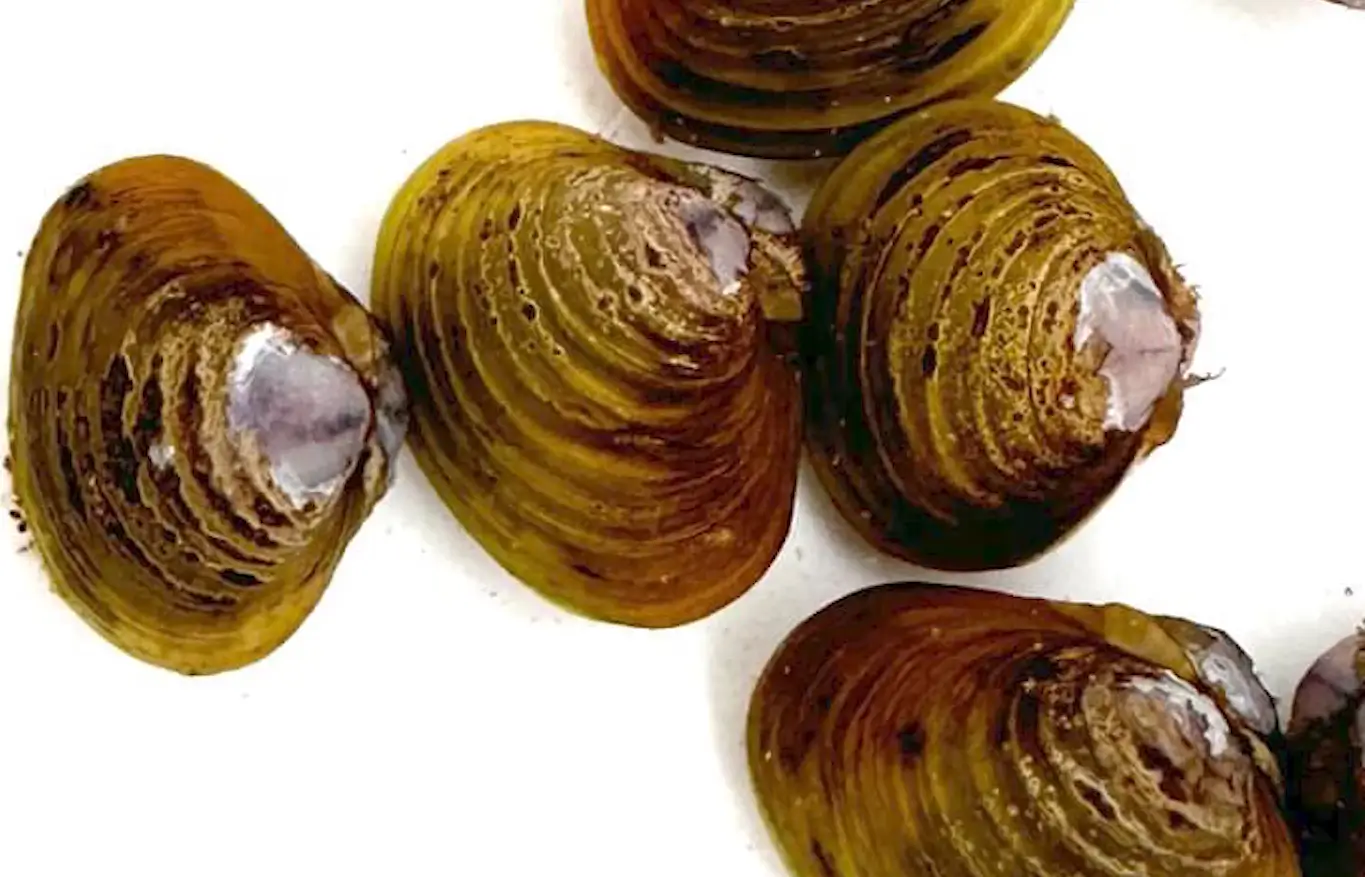
River iwi collected 125 kg of invasive Gold Clams after an experimental control harvest along a stretch of the Waikato River over the weekend.
Ngaati Korokii Kahukura Kaitiaki Poto Davies said the dig on Saturday was organised by the iwi at Bob’s Landing, near Karaapiro, after Gold Clams were discovered there in early May. There was a sense of frustration at the response to date, and a strong desire by iwi to unite and take action. “We wanted to demonstrate our aroha for the awa and this was us walking our talk,” says Davies.
The harvest aligned with Mercury Energy’s annual lowering of the river, which is required under resource consents to inspect dam structures and allow for boat ramp maintenance along the river. The iwi members worked on a 100-metre by 30-metre stretch of riverbed which is usually underwater. The extent and sheer numbers of the Gold Clam’s spread devastated the whaanau. “The sheer number of clams is heartbreaking, but that did not deter everyone from doing their best,” says Davies.
The trial involved representatives from Tuuwharetoa, Te Arawa River Iwi, Raukawa, Waikato-Tainui, Maniapoto, Ngaati Hauaa, Ngaati Korokii Kahukura and the Waikato River Authority, hand-picking clams. The clams were collected, sorted, weighed, and boiled onsite with kawakawa leaves. They were later buried offsite.
New Zealand Biological Heritage Science Challenge Pou Puutaiao (Chief Scientist) Erina Watene said the initiative was a trial to understand more about the extent of the infestation and see what impact whaanau mobilisation could have on removing them. “We had no idea of the extensive distribution out there right now, and what we removed was the tip of the iceberg, so that’s part of the learning moving forward.”
All gear, footwear, and equipment used during the day were washed and treated appropriately with three treatment options on-site, including bleach wash, boiling water, and isopropyl alcohol spray to prevent further spreading of the Gold Clams. Watene says the lessons learned from the dig will be shared with other river partners and help inform the next steps.
Some population analysis was conducted with NIWA before the river iwi dig, which was permitted by the Ministry of Primary Industries. The freshwater Gold Clam is native to eastern Asia. These clams reproduce rapidly and form large populations that can clog water-based infrastructure such as electricity generation plants, irrigation systems, and water treatment plants. They are filter feeders that can potentially compete with native species for food. It is not advised to eat them.
ENDS
He mea homai naa te Waikato River Authority.
